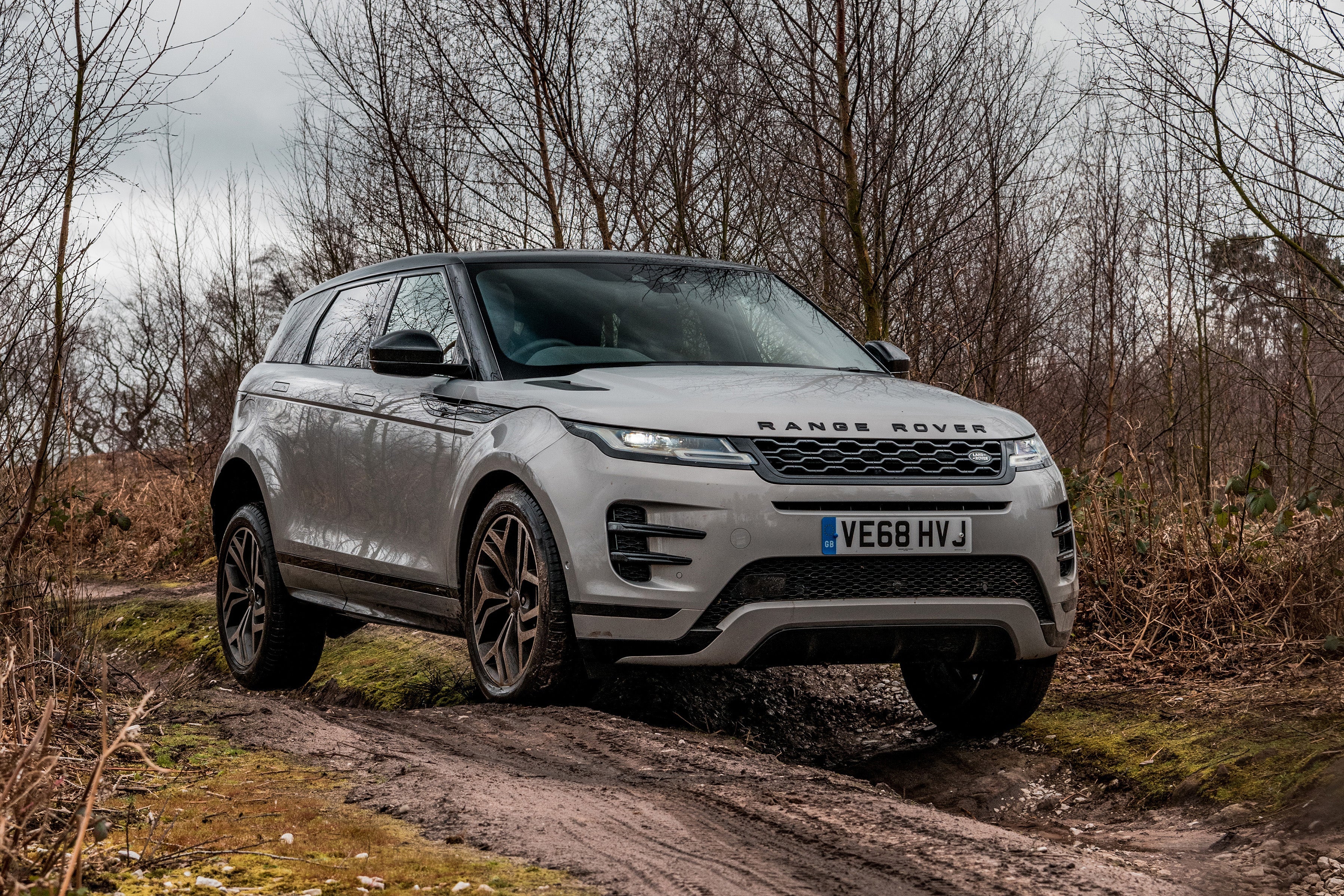Range Rover Evoque Review 2024
Written by Andrew Brady
Quick overview
Pros
- Looks fabulous inside and out
- Loads of luxury equipment provided
- Nice to drive in every way
Cons
- Pricey compared with rivals
- Efficiency figures aren’t that great by comparison
- Land Rover’s reliability record has to be a worry
Overall verdict on the Range Rover Evoque
"The Range Rover Evoque is one of the most stylish SUVs in its class, and it has the substance to back up the style. Not only is it great to look at inside and out, it’s also comfortable and enjoyable to drive, practical enough for a small family, and comes loaded with luxury equipment."
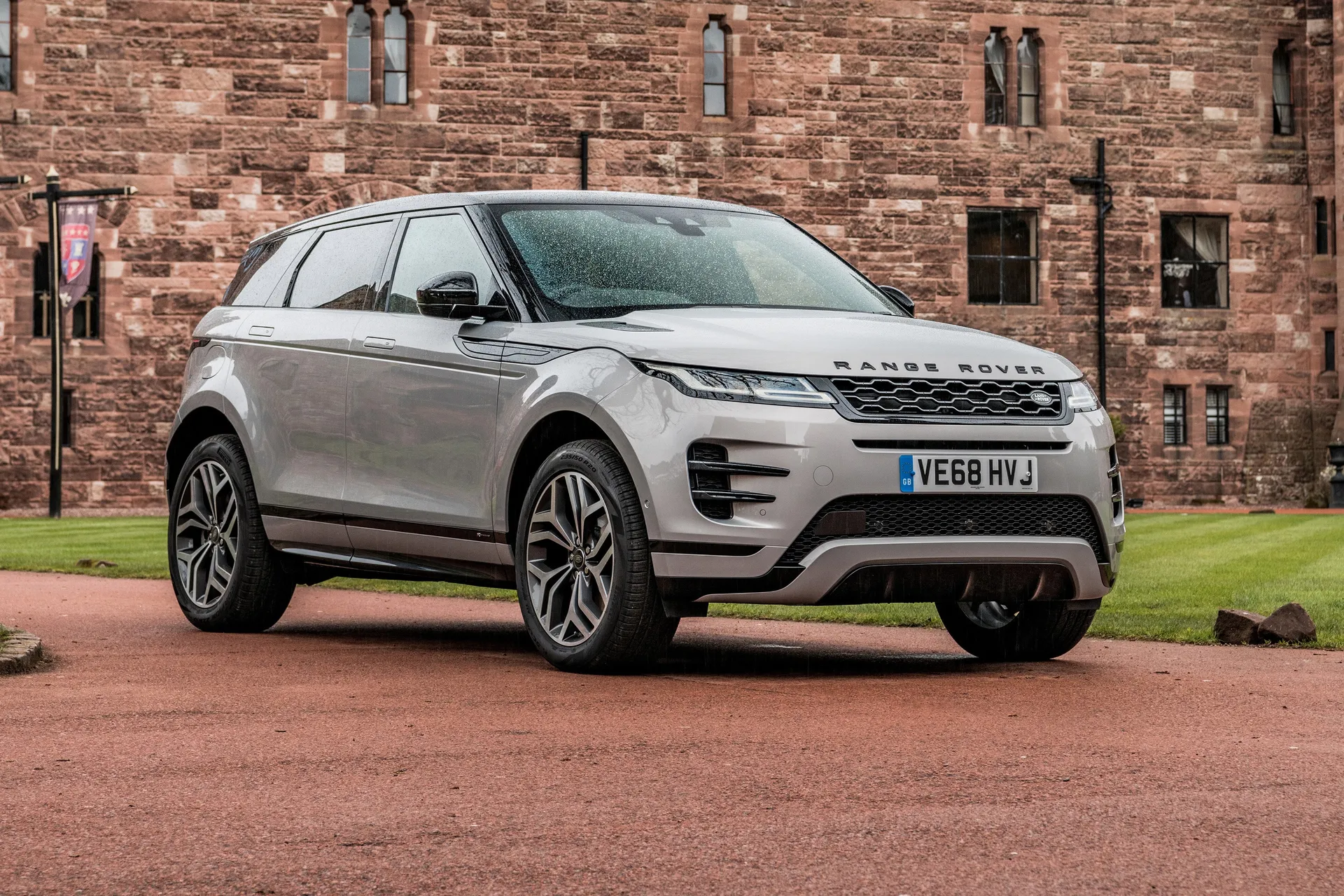
The Range Rover Evoque was in the vanguard of premium small off-roaders when it first arrived in 2011. The latest generation, launched in 2019 took the model much further down the premium route to fend off rivals like the Audi Q3 and BMW X1, which both seem more like awkwardly jacked-up hatchbacks rather than scaled-down off-roaders. To find out more, read on for our review of the Range Rover Evoque.
When the Range Rover Evoque rocked up, it was a complete revelation. Among the awkwardness, here was suddenly elegance. The bold, angular details and crisp lines of the baby Range Rover made it stand out a mile against pretty much any car, let alone the humdrum competition, and pretty much anyone who gave a hoot about cars at that time wanted one for that reason alone.
In truth, it wasn’t that brilliant a car in a lot of other ways, but its jaw-dropping looks ensured it was an enormous success nonetheless.
Fast-forward to the present and small SUVs - prestige or otherwise - are all the rage. The competition from Audi and BMW has seriously upped its game, in terms of its styling and in a whole host of other areas, and the popularity of this type of car means that there are more contenders than ever before. That means the second-generation Evoque has its work cut out in keeping the affection of a spoiled-for-choice public.
It’s just as well, then, that the current Range Rover Evoque is an absolute cracker of a car. The competition may have upped its game, but don’t go thinking that Land Rover has rested on its laurels.
Where the first Range Rover Evoque was rather lacklustre on both ride and handling, the latest car rides with a plushness to match most other cars in the class, and also deals with corners in an impressively secure and controlled way. Big strides have also been made on refinement, with quieter, smoother engines and really good suppression of exterior noises.
The Range Rover Evoque now has what it takes to match most rivals on practicality too, with a roomy cabin and a very decent boot. Quality has also been kicked up a notch, with really impressive cabin materials, and on SE trim and above, a cool-looking twin-touchscreen arrangement for the centre console adds a real touch of glamour. What’s more, most versions come with all the luxury and safety kit you need.
Yes, it’s not a cheap car, costing more than most of rivals. However, for style-conscious buyers - which SUV customers most certainly are - the glamorous Range Rover Evoque might well be the only choice.
Looking for a used car for sale? We've got 100s of Land Rover Approved Used Cars for Sale for you to choose from, including a wide range of Range Rover Evoques for sale. If you're looking for the older version, you need our used Range Rover Evoque (2011-2019) review.
Is the Range Rover Evoque right for you?
The whole reason that buyers love premium SUVs because they provide a level of style, image and desirability that you don’t get with other kinds of car. And, if it’s the style aspect of that equation that you’re particularly interested in, then the Range Rover Evoque is arguably the most stylish car in its very stylish corner.
It’s a very handsome car that stands out against rivals. And if the rest of the car isn’t handsome enough, all versions come with retractable door handles that sink flush into the bodywork when not in use for a bit of extra visual theatre. If you’re looking to ‘make an entrance’, no car of this type does it better than the Evoque.
But unlike its predecessor, this is now a car you can buy with your head and your heart. There's a good amount of space for family buyers, it drives well and quality seems to have improved significantly. However, it's still balanced towards style over practicality, so buyers after a Land Rover with more of the latter might want to check out the Land Rover Discovery Sport.
What other cars are similar to the Range Rover Evoque?
The Range Rover Evoque wasn’t the first car offered in the small luxury SUV class, but it was arguably the one that made it so popular. Even today, the Evoque still dusts it with its longstanding rivals in the form of the Audi Q3 and BMW X1, both of which have also come on leaps and bounds.
You can bet that wherever Audi and BMW go, Mercedes is sure to follow, and although it was slightly later to the party than the rest, the firm is represented in this class by the GLA, and to some extent the stylish seven-seat GLB too.
Meanwhile, the Lexus UX offers buyers a self-charging hybrid choice, while the Volvo XC40 is a similarly style-led alternative that's also fairly practical. Sister brand Jaguar has also greatly improved the E-Pace in the last couple of years, meaning it's a strong alternative.
Comfort and design: Range Rover Evoque interior
"The interior of the Range Rover Evoque has always been a stylish place to sit. Now, it's attractive but also well-made and posh-feeling, with a classy twin-screen infotainment system on high-spec models."
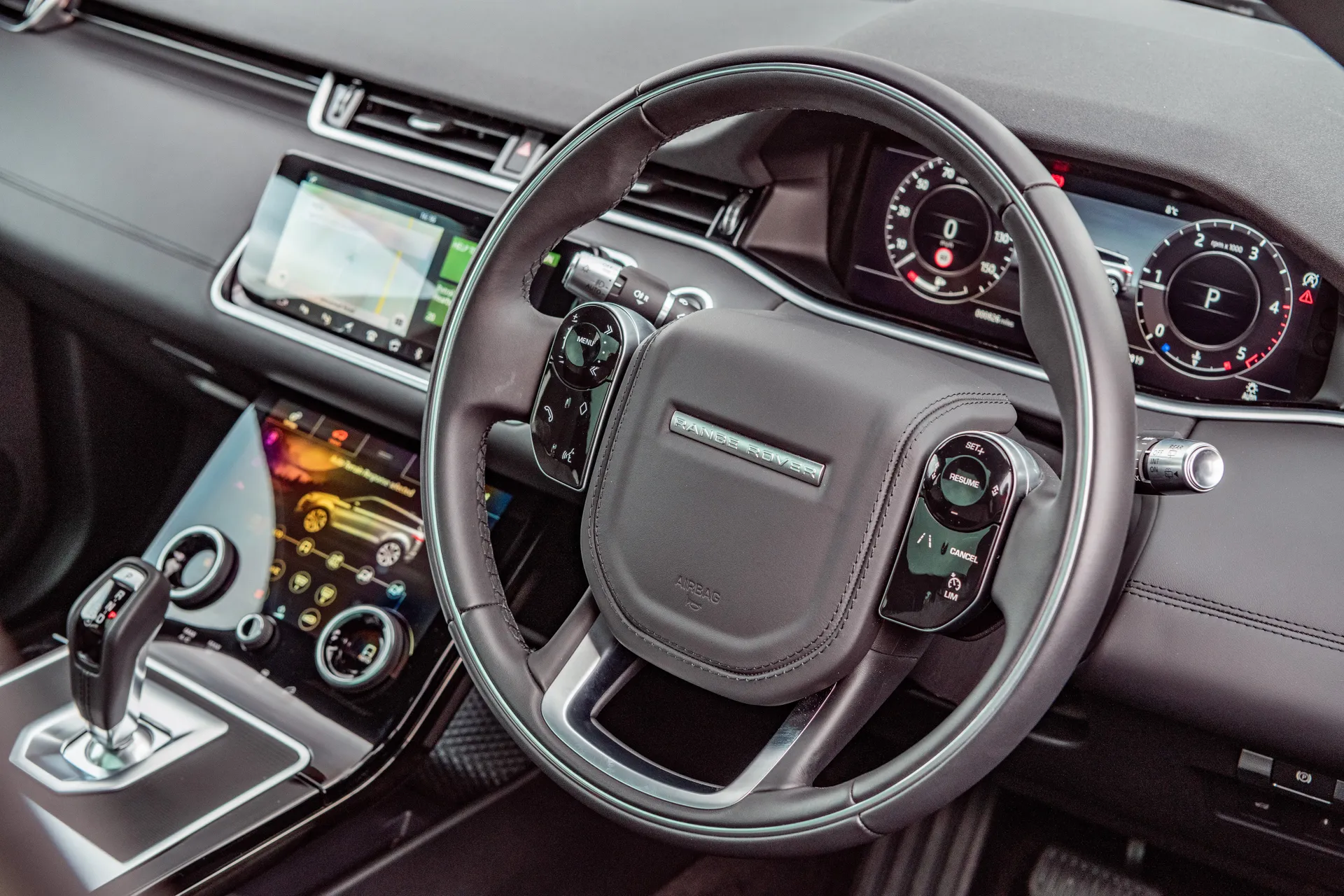
Describing the dashboard layout of the Range Rover Evoque is a little tricky. As you’ll discover in the infotainment section below, high-spec Evoques have a twin-screen infotainment arrangement, plus a digital instrument screen in place of traditional dials. And, we’ve described that below.
However, lower-spec versions get only one screen for the infotainment system, plus conventional instruments. Land Rover has never let us anywhere near a low-spec car, presumably because they don’t look anywhere near as posh (the twin-screen arrangement has plenty of wow-factor, to be fair), so we can’t tell you what the basic setup looks like, or how easy it is to use. Sorry about that.
The seats are wonderfully supportive, though, and thanks to bags of adjustment for the steering wheel and seat (on the latter, that adjustment is electric on all but the entry-level trim), you won’t struggle to find a comfortable driving position. You also sit higher up than you do in rivals from Audi and BMW, which dedicated SUV fans will really appreciate.
This gives you a cracking view out at the front, too, and although the rear end is styled quite flamboyantly, resulting in a slightly shallow rear window, you can see a decent amount out of the back thanks to well-placed rear quarter light windows. What’s more, all versions come with all-round parking sensors and a reversing camera as standard.
Quality and design
When you’re competing in a class of car that includes Audis, BMWs and Mercs, famed for their Germanic solidity and class, it might be very easy to get left behind in this area. Don’t worry, though, because there’s not a bit of that with the Range Rover Evoque.
The materials on show feel plush and tactile, and the surfaces and finishes are of a uniformly high standard throughout. The glossy, shiny-fronted touchscreens certainly do their bit to jazz things up, too, and the assembly feels sturdy and solid. This is a cabin that’s a match for anything else in the class in terms of poshness.
The S trim is now the entry point for brand new Evoques and it comes with leather upholstery as standard, whereas earlier base versions made do with cloth trim. The HSE cars get plusher Windsor leather, as does the Autobiography top flight model.
If you’re not a fan of animal products, though, the car is also available (as a no-cost option) with what Land Rover calls the ‘Eucalyptus’ interior trim - a more envionmentally-friendly fabric that feels surprisingly nice to the touch. The steering wheel cover, although made from recycled plastic, looks and feels like suede, while the seats are trimmed in a denim-like fabric, and it all looks and feels as high-grade as the leather. However, no matter which model you choose, we think you will not be disappointed with the quality. And you have to look very hard to find anything that looks or feels under par for a luxury car.
Infotainment: Touchscreen, USB, nav and stereo in the Range Rover Evoque
All brand new versions of the Range Rover Evoque have a 11.4-inch central touchscreen system that brings together Bluetooth, DAB and Apple Carplay/Android Auto - previously a 10-inch screen was used. With used models, the S trim and above upgrades to also support navigation, a wifi hotspot and a variety of connected services.
We'd look for an SE trim with a used Evoque as it adds a second screen underneath - this time with inset dials - which can change its functionality according to which menu you’re in at the time, although as a default, it mainly handles the ventilation and off-road systems. It looks the absolute business, and it also works reasonably well once you’ve got used to it, but it is a little distracting on the move. At least you get near physical dials to adjust the temperature and fan speed, which also double as controls for the heated seats. In new cars, this second screen is in all but the S trim.
The step to SE also brings a configurable digital display in used examples behind the steering wheel instead of the conventional analogue dials found in more humble Evoques, and it displays a wide range of information in a clear, easy-to-digest way. Upgrading to HSE trim also brings an upgraded Meridian sound system that sounds pretty good. Again, cars ordered new now have the Digital Driver Display across all trims.
Whichever grade of car you go for, though, the central touchscreen isn’t perfect. The graphics are sharp and the on-screen icons are big enough, but the menus could be more logical, while the screen could be a little quicker in both its reactions and its transitions. Having said that, it does boot up much more quickly than Land Rover's previous generation system.
Space and practicality: Range Rover Evoque boot space
The Range Rover Evoque does a thoroughly respectable job in this area. There’s loads of space in all directions up front - as you’d expect - and in the back, there’s a very similar amount of headroom and legroom to what you get in rivals.
Six footers will fit comfortably, and because the rear of the cabin is also a little wider than in rivals, things won’t feel quite so pinched when you have to sit three across the rear bench. A pair of child seats will fit in no problem, and there are ISOFIX tetherings to secure them with. That said, the back seats don’t slide or recline or anything clever like that, which they do in some rivals.
The boot is a very decent size. Land Rover claims it can carry up to 591 litres with the seats up and 1,383 litres with them down, although this is measured from the floor to the roof so isn't a comparable figure with rivals.
Nevertheless, it should cope with most of what a family needs from it, including the ability to swallow pushchairs or golf clubs, depending on your day’s activities. It is marginally smaller than those of rivals, though. The rear seats fold down in a versatile 40-20-40 configuration, and they go down more or less flat, leaving you with a flush load area. There’s no boot lip to contend with when loading heavy items, either.
In terms of external dimensions, the Range Rover Evoque is 4371mm long, 2100mm wide including the door mirrors and 1649mm tall. This means it's slightly shorter (but wider and taller) than the BMW X1 and Audi Q3.
Handling and ride quality: What is the Range Rover Evoque like to drive?
"The Range Rover Evoque now offers a much better driving experience than its predecessor, with a focus on offering comfort that is almost on a par with larger Range Rovers. The handling is composed rather than exciting, but few SUVs can claim to be the latter."
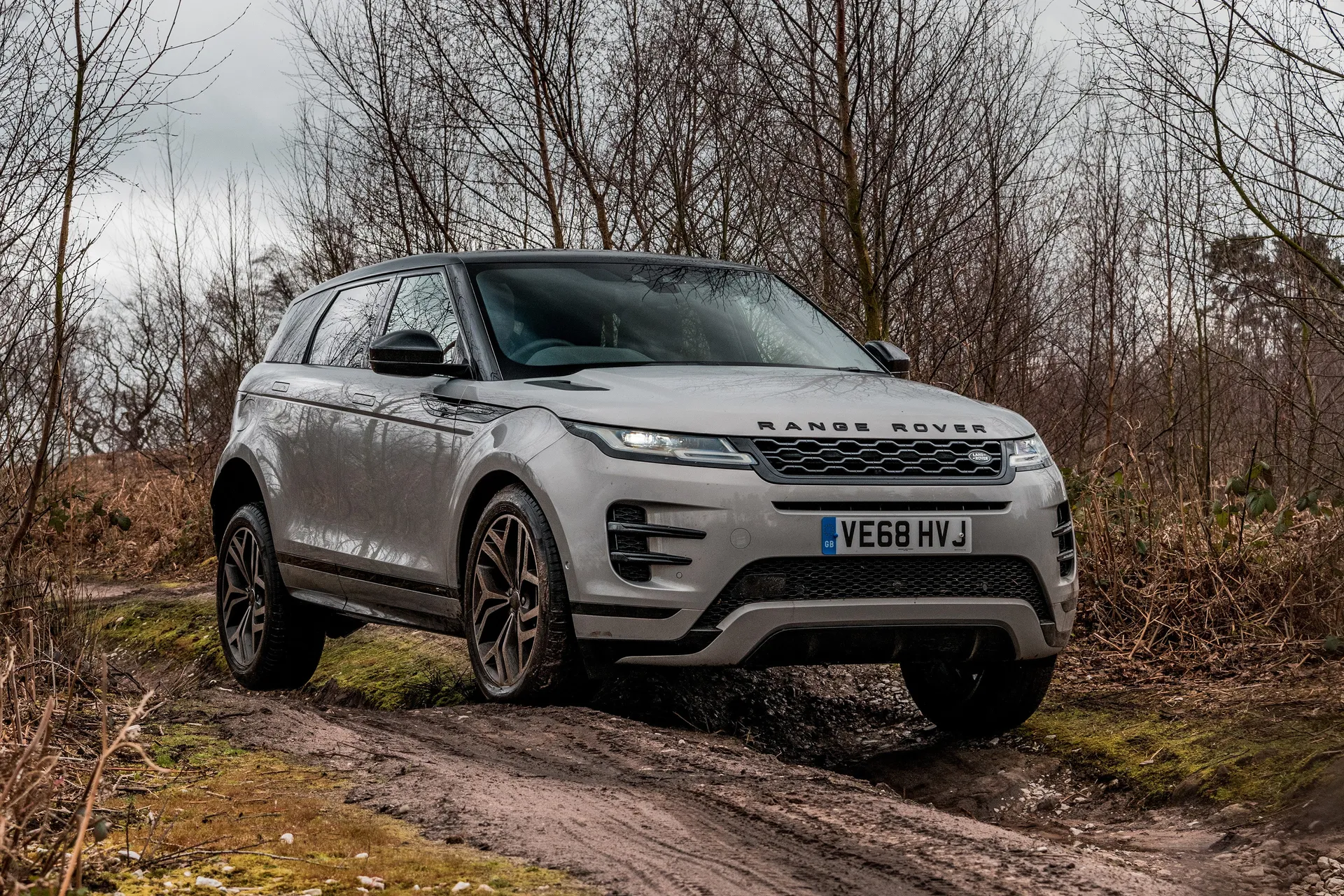
This was an area in which the previous Range Rover Evoque was merely so-so, but this version does much better, providing an impressive balance of abilities. The suspension is absorbent, so it can deal with most potholes and sharp-edged bumps with minimal fuss, yet the ride is still well controlled and the body doesn’t bounce around wildly over crests and dips.
Things feel settled and serene on the motorway, too, making this a comfortable way to munch through the miles. We’d certainly advise sticking with smaller wheels, as things get appreciably more lumpy if you specify the big 20-inchers, but even then, the Evoque isn’t an uncomfortable car.
The handling is assured and capable rather than electrifying, but that’s fine in a car like this. You do feel the body leaning over a bit in corners, but there’s lots of grip and traction on hand, especially in the four-wheel drive models. The steering is responsive and nicely weighted, so placing the car where you want it is always easy.
You’d expect any Range Rover - even a little one like the Evoque - to be good when venturing off the beaten track, and sure enough, it’ll take you where rivals from Audi, BMW, Mercedes and Volvo fear to tread thanks to its clever off-roading system. The four-wheel drive diesels will also tow up to 2000kg, although that figure can drop to 1600kg on some of the plug-in hybrid models, so check before you buy.
An adaptive suspension is available as an optional extra, but we haven’t had the chance to try it. All but base models have Terrain Response 2 to help tailor the four-wheel drive system to the prevailing conditions and find grip where you might not otherwise expect it.
What engines and gearboxes are available in the Range Rover Evoque?
All of the Range Rover Evoque’s regular engines - petrol and diesel - are 2.0-litre units. For used models, the diesels come with 150PS, 180PS or 240PS, while the petrols come in 200PS, 249PS and 300PS forms. The entry-level 150PS diesel can be had with front-wheel drive and a notchy manual gearbox, or with all-wheel drive and a slick nine-speed automatic, but from then on, all other Evoques are of the latter persuasion.
The entry-level diesel will be muscular enough for many drivers, with enough urge to pull you around reasonably easily, and you won’t struggle to keep up with motorway traffic. However, the D180 provides a good bit more urge making life a bit easier in many day-to-day driving situations, so we’d definitely say it’s worth the upgrade. We’ve not tried the most powerful diesel, but it’s quite a bit quicker than the others on paper.
The petrols are quicker still, with only the entry-level 200PS version failing to outpace the most powerful 240PS diesel. However they don’t deliver as much low-down pull as the diesels, meaning you have to work them much harder to extract that kind of performance, so they don’t actually feel as eager. This is definitely a car that suits a diesel engine.
There might be an exception to that, though, in the form of the P300e. This plug-in hybrid variant teams a 1.5-litre petrol engine with an electric motor to give a combined output of 309PS, making it the fastest Evoque on paper. Admittedly, the P300e doesn't feel quite as rapid as its numbers suggest on the road, but it is a very smooth car to drive and a fully charged battery will carry you up to 34-miles on pure electricity - perfect for short runs around town or a modest commute.
Land Rover rearranged its petrol and diesel line-up in 2020. The base engine is now the D165 with 165PS and six-speed manual gearbox, or you can have a mild hybrid version with the same power and a nine-speed auto. There's also a D200 version of the same 2.0 litre turbodiesel with 204PS and mild hybrid assistance. The P200 and P250 are a turbo petrol engines of 2.0 litres with 200- and 250PS, respectively, with the auto transmission. For most, the D165 mild hybrid engine will be ideal thanks to decent performance and economy unless you drive mostly in town where the petrol will be preferable.
Refinement and noise levels
As you’d expect, the PHEV version of the Range Rover Evoque is whisper-quiet when running on electric-only power. The 1.5-litre turbocharged petrol engine is smooth and hushed, too, which means it can be quite difficult to tell if the car is running on electricity or combustion power at low speeds - it's that good. Things can get a little more vocal at high speeds, particularly if you thump the throttle, with the engine emitting a low rumble, but the P300e is a very refined package.
Where the diesels are concerned, the more powerful versions are quieter, not least because you have to work them less to make progress, but they all compare well to those of rivals noise and vibration.
Treated gently, the petrols are smoother and quieter still, but again, they have to be worked harder than the diesels to haul you around at the rate you’d like. And they can start to sound a little thrashy.
All the engines melt away into the background once you’re up to cruising speeds, and you won’t hear too much in the way of wind or road noise, making life very peaceful on the motorway.
Safety equipment: How safe is the Range Rover Evoque?
Whichever version of the Range Rover Evoque you go for, you’ll get safety kit that includes LED headlamps, tyre pressure monitoring, lane-keeping assistance, automatic emergency braking and six interior airbags. There’s even an airbag on the outside to help protect any pedestrian that has the misfortune to become overly-acquainted with the front of your car. From then on, the amount of safety kit changes with each step up the trim structure.
S trim cars have traffic sign recognition with automatic adjustment of the cruise control, while SE trim gives you upgraded LED lights with high beam assistance, plus front- and rear cross-traffic alerts and a system to help steer you into a parking space.
HSE cars also add blind-spot monitoring, adaptive cruise control and high-speed automatic braking. Euro NCAP has diligently and scientifically smashed the Evoque into things, and the car emerged with a full five-star rating. Some won’t like the fact that no spare wheel is provided, though, with a pot of sealant your only protection against being stuck in the event of a puncture.
The Autobiography goes even further with a 3D surround view camera for parking and a head-up display for the driver.
Maximum EV range of the Range Rover Evoque PHEV
The P300e plug-in hybrid version is capable of up to 34 miles of electric-only range in the earlier versions on a full charge of the batteries, according to official figures, and because it can travel at up to 84mph on the batteries alone, those with short commutes should be able to get to work without using a drop of petrol. That commute will need to be far less than 34 miles, though. Later cars are rated at between 37.9- and 46.6 miles depending on the trim level on a full battery charge.
Those are figures gleaned from laboratory testing where various real-world variables (wind resistance, traffic, ambient temperatures) aren’t accounted for, so you’ll get less in reality. We’d work to around 30 miles, and less than 25 in cold weather. Besides, you’ll probably never put a full charge in your battery, because only charging to 80% prolongs the usable life of this expensive part.
Land Rover quotes charging times between 0-80% of around an hour and a half on a 7kw wallbox charger, and around half an hour on a DC public charger rated at 32KW. If you want to charge up your P300e via a three-pin plug then you will be waiting over six hours.
MPG and fuel costs: What does a Range Rover Evoque cost to run?
"Fuel economy is why the diesels are most popular in the Evoque, especially among high-mileage drivers. The diesel in front-wheel-drive form will return a maximum combined figure of around 45mpg according to the official WLTP figures, but you don’t pay too much of a penalty for adding four-wheel drive and an automatic gearbox."
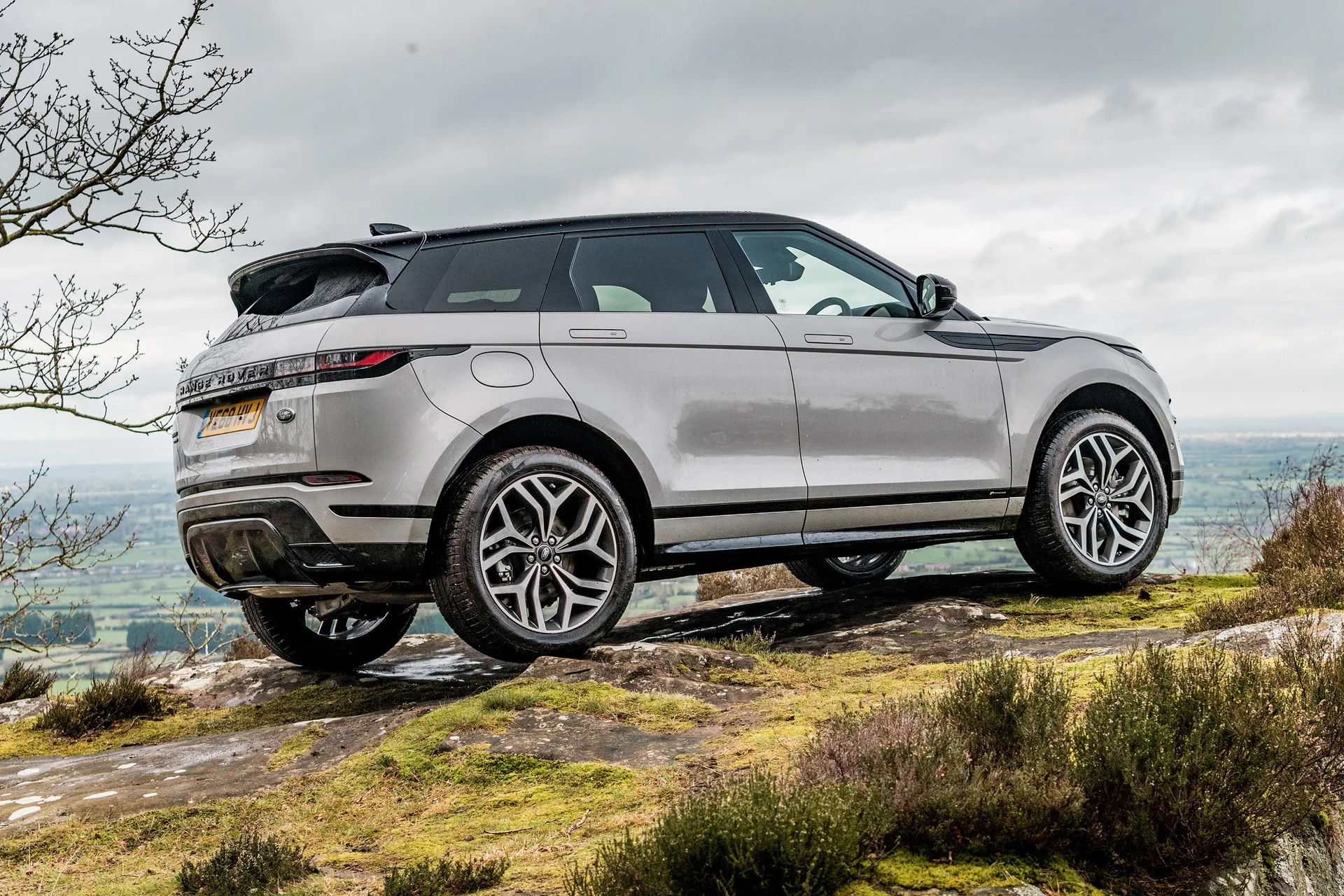
The D180 returns about the same, where the D240’s output drops to around 40mpg. Whichever version of the 2.0-litre petrol engine you pick, you’ll get a very similar fuel return of around 31mpg, according to the official figures.
Looking at brand new Evoques rather than used models, the D165 offers 46.7mpg, while the D200 mild hybrid manages 44.0mpg. Opt for a petrol and you're looking at 32.6mpg for the P200 and the P250 delivers a quoted 32.1mpg.
Remember, though, that these official figures are derived from laboratory tests, and matching them in the real world could be very difficult. In the case of the P300e, to get anywhere near the maximum average figure of 195.3mpg, you’ll need to drive the car with a fully charged battery most of the time and reserve the use of the petrol engine for Christmas and birthdays only.
How reliable is the Range Rover Evoque?
Land Rover finished in a very creditable ninth place in the manufacturer table in the latest HonestJohn.co.uk Satisfaction Index. That's a definite improvement on previous years, suggesting the brand has focused on improving quality control and reliability.
The previous generation Range Rover Evoque had its fair share of quality niggles and mechanical problems reported, which took the shine off the ownership experience for many. However, it does seem that the brand is moving in the right direction, and we'd expect this new version to be more dependable as long as the maintenance schedule is kept up to date.
Insurance groups and costs
The Range Rover Evoque isn’t a cheap car to buy, so it won’t be cheap to insure, either, but it shouldn’t be any steeper on that score than its major rivals. Groupings range from 26 at the bottom of the scale to 40 at the top (1 being the cheapest group and 50 being the most expensive).
Keeping your choice of engine modest will help minimise your costs. Pound for pound, the D180 engine sits around three groups higher than the D150, and we’d say that’s an upgrade worth making.
How much should you be paying for a used Range Rover Evoque?
"Although it's still relatively new, enough time has passed to allow the latest Range Rover Evoque to become more affordable on the used market. A one or two year-old car will have taken a decent depreciation hit, saving you money."

At the time of writing, prices for brand new Evoques start at a shade over £40,000 for the D165 front-wheel drive manual in standard trim, and rise to a maximum of more than £57,500 for the Autobiography in D200 form.
The one we reckon most buyers will want from the first flush of this Evoque generation is the D180 SE, which can now be found from £19,000 on the used market. A P250 petrol will start at around £21,000, while a P300e will cost you from £24,000 for one with higher than average mileages.
Worse news for used car buyers is that the Evoque also has stronger residual values than its rivals, so second-hand examples will also be that much more expensive.
Trim levels and standard equipment
All versions of the Evoque come with those jazzy electric door handles, along with alloy wheels, automatic lights and wipers,, a heated windscreen, two-zone climate control, heated fabric seats, a leather steering wheel, front- and rear parking sensors, a reversing camera, cruise control and four powered windows.
Upgrading to S trim brings leather, electrically-adjusting front seats, navigation and a wifi hotspot, but most buyers will upgrade a step further to SE for those funky twin screens, digital dials and a powered tailgate.
HSE trim adds keyless entry, upgraded leather, a hands-free powered tailgate and the upgraded Meridian sound system, while if you find a First Edition car, it’ll be tooled up with a head-up display, panoramic roof and a heated steering wheel that adjusts electrically. At every stage of the game, you can also add an R-Design Pack that brings a variety of exterior and interior design embellishments and varies the nature of the leather upholstery you get.
Towards the end of 2023, Land Rover revised the Evoque's trims to start with the S. Next is Dynamic SE, and it mimics, the previous SE, as does the Dynamic HSE with the earlier plain old HSE trim. Top of the line is the Autobiography that has a slidnig panoramic sunroof, pixel LED headlights, 3D surround camera, head-up display for the driver, extended Windsor leather trim, 14-way electric front seat adjustment, Meridien stereo system, and a Clearview rear-view mirror.
Ask the heycar experts: common questions
Is the Range Rover Evoque four-wheel drive?
What problems does the Range Rover Evoque have?
Is the Range Rover Evoque worth buying?
Get our latest advice, news and offers
Keep me updated by email with the latest advice, news and offers from heycar.
By submitting you agree to our privacy policy
